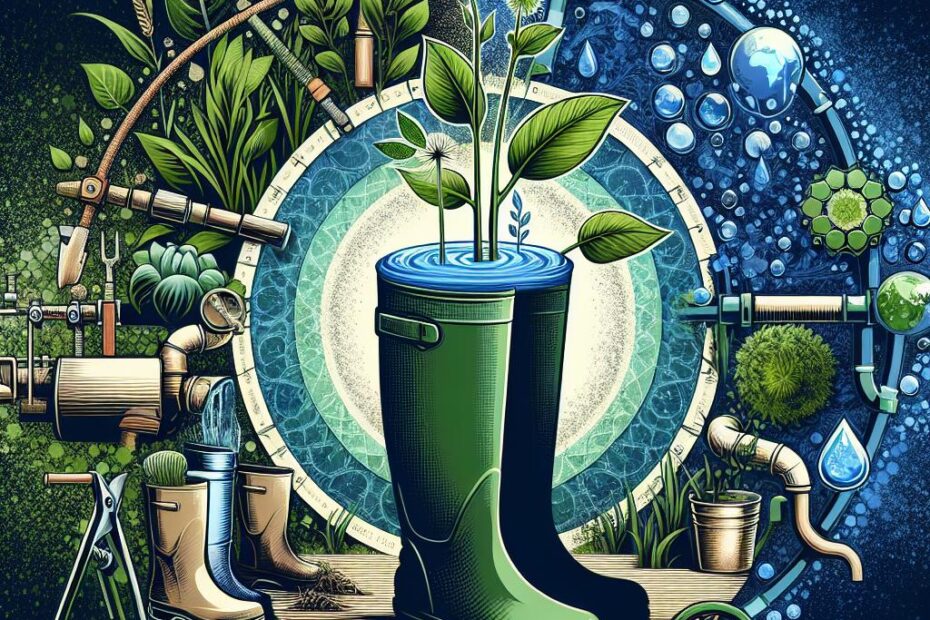In the luscious realm of nature, where water reigns supreme and land transforms into a moist paradise, lies a mesmerizing world of vibrant foliage thriving harmoniously in wet areas. While many plants may fear the dampness that engulfs these corners, a select few have evolved to embrace it, gracefully adorning our gardens and landscapes with an ethereal charm. Join us as we embark on a captivating journey to discover the best plants for wet areas, where the marriage of soil and moisture gives rise to a kaleidoscope of beauty, blending innovation with nature’s unwavering resilience. Let us wander through these verdant realms and uncover the hidden gems that transform waterlogged landscapes into breathtaking displays of serenity.
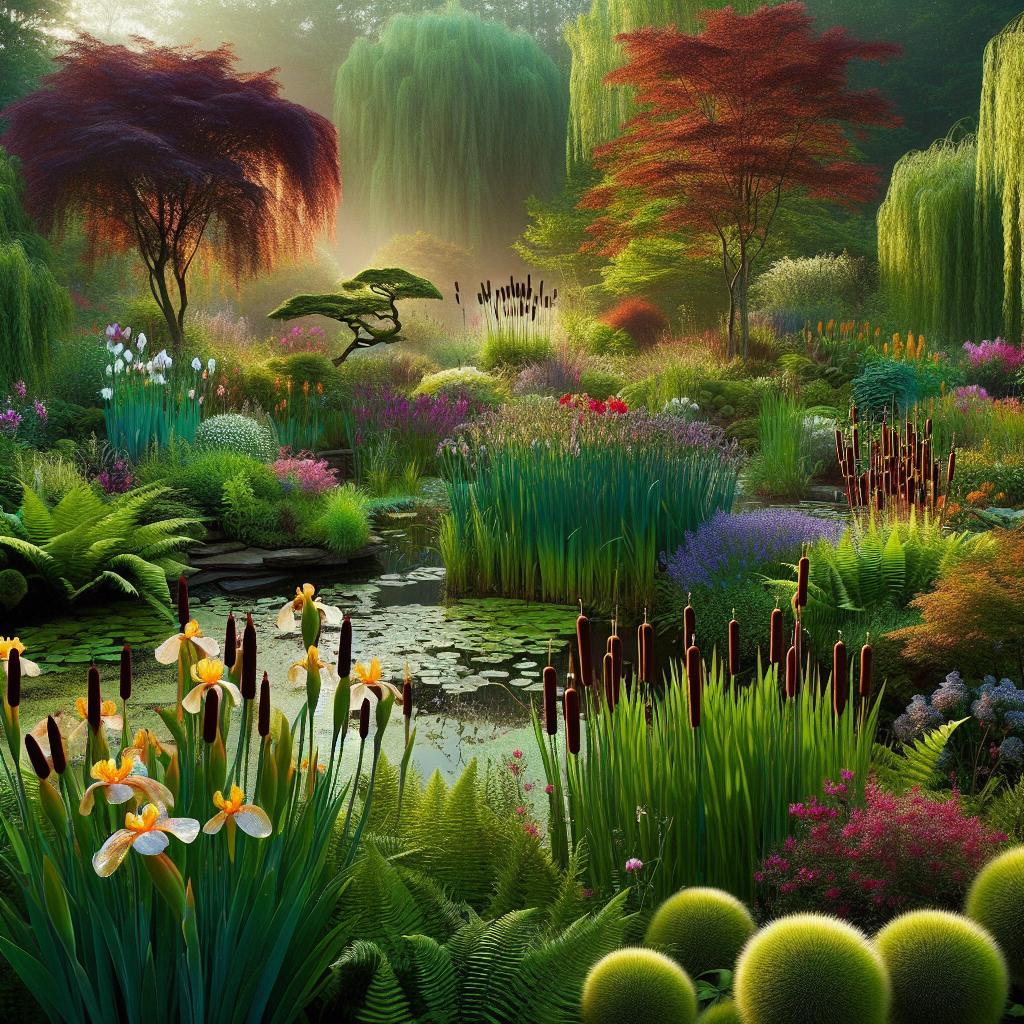
Best Plants for Wet Areas: Enhancing Moisture-Loving Beauty in Your Garden
Add a touch of enchantment to your garden with these stunning plants that thrive in wet areas. Whether you have a marshy corner or a rain-soaked landscape, these moisture-loving beauties will transform your space with their vibrant colors and unique foliage. Not only will they bring a sense of tranquility and harmony to your garden, but they also act as natural filters, absorbing excess water and preventing soil erosion.
When it comes to choosing the best plants for wet areas, there are several options to consider. One delightful choice is the delicate Caltha palustris, also known as the Marsh Marigold. Its bright yellow flowers, reminiscent of rays of sunshine, are a sight to behold. Another remarkable plant is the majestic Iris ensata, or Japanese Water Iris. With its large, elegant blooms in various shades of purple, white, and blue, this perennial will add a touch of elegance to any waterlogged garden bed. The bold and vibrant foliage of Colocasia esculenta, or Elephant’s Ear, is another excellent choice. Its large, heart-shaped leaves, resembling the ears of an elephant, create a tropical atmosphere like no other.
Best Plants for Wet Areas:
- Caltha Palustris: Also known as the Marsh Marigold, this plant with its bright yellow flowers brings a sense of cheerfulness to any wet garden.
- Iris Ensata: The Japanese Water Iris provides an elegant display with its stunning blooms in various purple, white, and blue hues. Perfect for a waterlogged garden bed.
- Colocasia Esculenta: With its bold and tropical foliage resembling elephant ears, this plant adds a touch of drama and exoticism to wet areas.
Adding these exceptional plants to your wet areas will not only enhance the visual appeal of your garden, but they will also create a thriving habitat for various wildlife. From frogs to dragonflies, these plants attract a diverse range of creatures to your outdoor oasis. Embrace the beauty of wet areas and transform your garden into a lush haven with these moisture-loving plants.
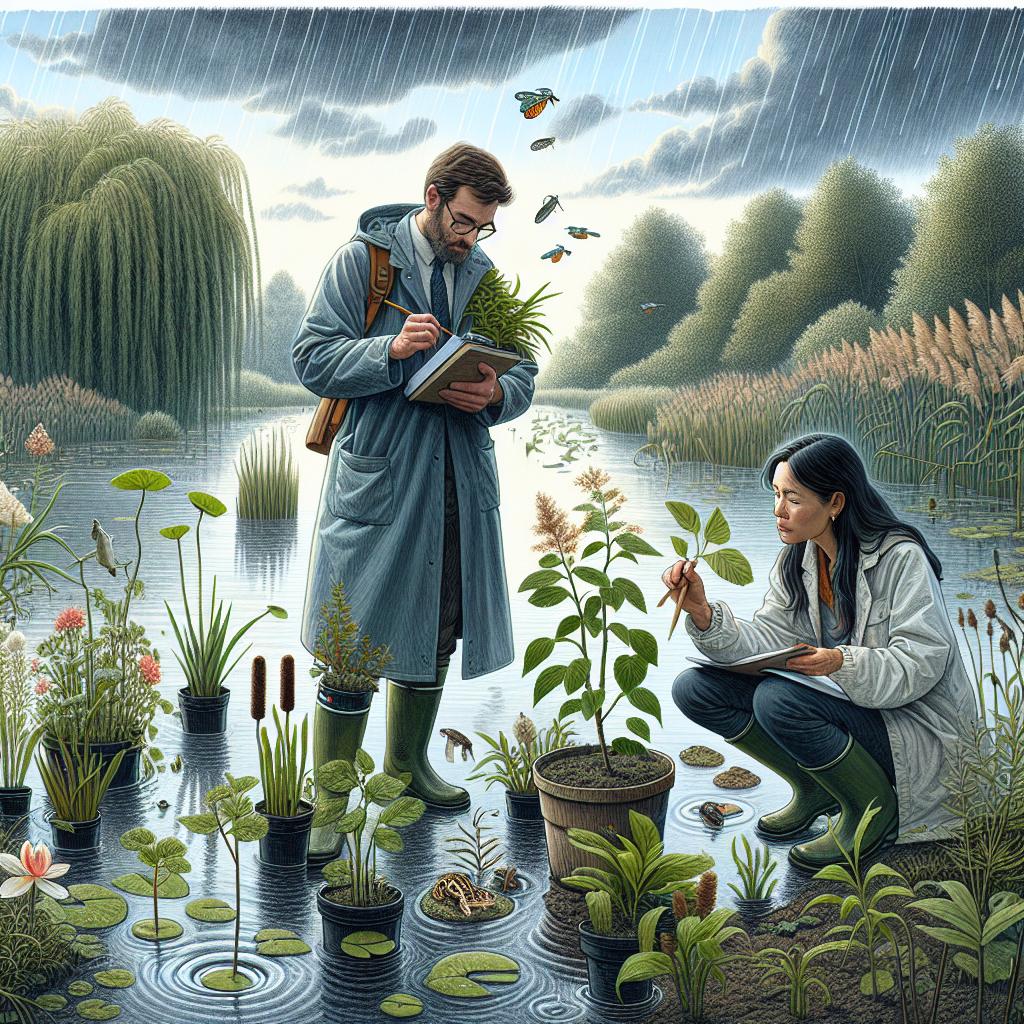
Understanding the Importance of Plant Selection in Wet Areas
When it comes to landscaping in wet areas, selecting the right plants is crucial for achieving a lush and thriving garden. Wet areas can present unique challenges, such as poor drainage, high humidity, and excess moisture, which can negatively impact plant health if not properly addressed. Luckily, there are a variety of plant species that thrive in wet conditions, adding beauty and resilience to your outdoor space.
One excellent plant choice for wet areas is the elegant Iris ensata, also known as the Japanese iris. With its vibrant and showy flowers, this plant not only adds a pop of color but also creates a stunning focal point in your garden. Its tolerance for wet soil makes it an ideal choice for areas with standing water or frequent rain. If you’re looking to attract pollinators, the Cardinal flower (Lobelia cardinalis) is a fantastic option. This stunning perennial, with its bright red blooms, not only adds beauty to your wet garden but also provides a vital food source for hummingbirds and butterflies.
- Golden Club: Scientific name: Orontium aquaticum. Characteristics: This aquatic perennial adds a touch of elegance to wet areas with its unique spadix-like flowers.
- Swamp Sunflower: Scientific name: Helianthus angustifolius. Characteristics: This tall and glossy flower brings a burst of sunshine to wet gardens with its vibrant yellow petals.
- Blue Flag Iris: Scientific name: Iris versicolor. Characteristics: With its stunning purple-blue flowers, this iris species is not only beautiful but also attracts bees and butterflies, enhancing your garden’s biodiversity.
Creating a diverse and resilient garden in wet areas is not limited to just flowers. Sedges, such as the Pennsylvania sedge (Carex pensylvanica), are excellent choices for providing texture and a lush ground cover. Their ability to tolerate damp conditions while requiring minimal maintenance makes them a great addition to any wet garden. Don’t forget about the versatile shrub options either, such as the winterberry holly (Ilex verticillata). Known for its bright red berries that persist throughout the winter, this shrub is not only visually appealing but also provides a source of food for birds in the colder months.
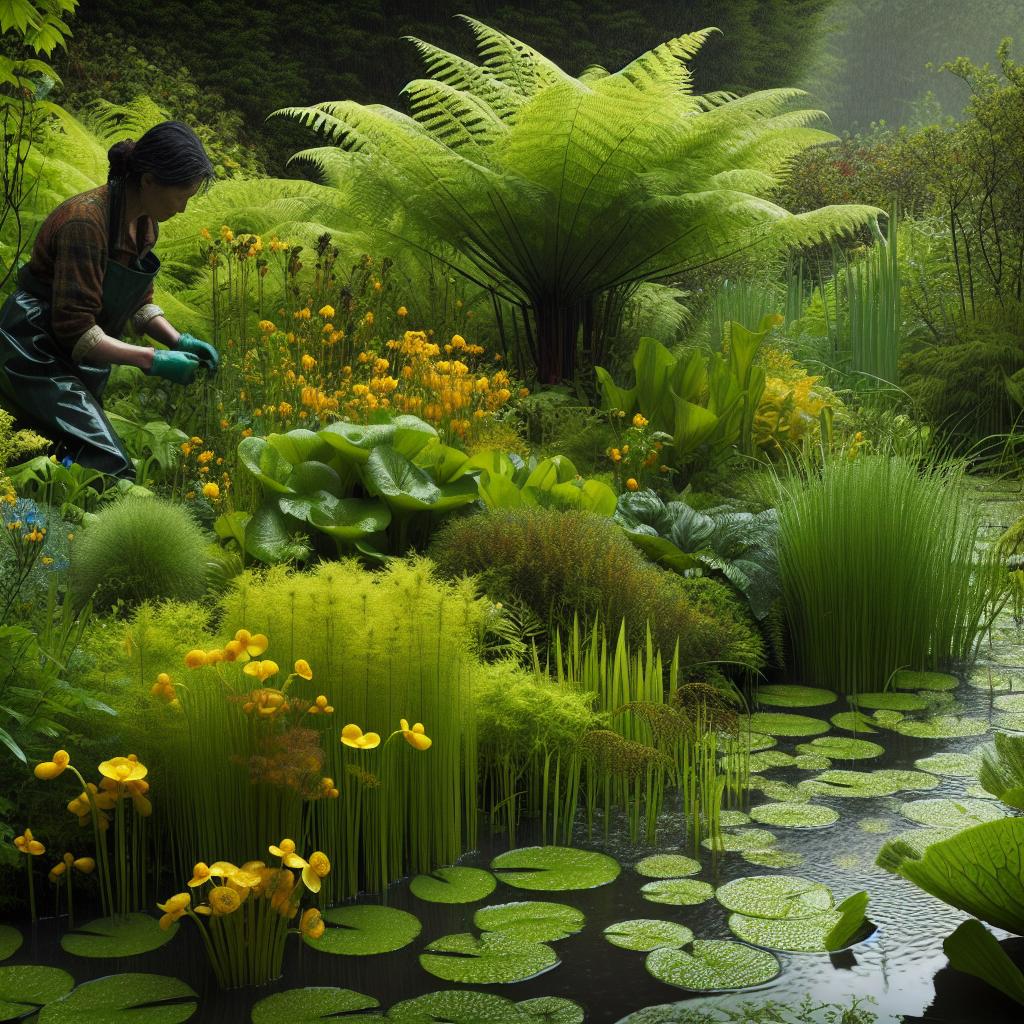
Thriving Amidst Moist Conditions: Plants That Love Wet Soil
If you have a garden or yard with moist, soggy soil, don’t worry - there are plenty of plants that thrive in these wet conditions. When it comes to wet areas, certain plants have evolved to adapt and even flourish in this environment. Here are some of the best plants that love wet soil:
Cattails (Typha spp.):
Known for their iconic brown spikes, cattails are versatile plants that can grow in almost any wet environment. They have extensive root systems that help stabilize the soil, making them perfect for preventing erosion along ponds and lakes. Cattails are also great at filtering water, as their roots help remove toxins and excess nutrients. Their unique shape and vibrant green foliage add interest to any wetland garden.
Japanese Iris (Iris ensata):
With their breathtakingly beautiful flowers, Japanese irises are a fantastic choice for wet areas. These elegant plants have large, showy blooms in shades of purple, pink, white, and blue. They prefer soil that’s consistently moist and can even tolerate standing water, making them ideal for pond edges or along streams. Japanese irises tend to be low maintenance, but they appreciate a little extra fertilizer from time to time to keep their vibrant colors at their best.
| Plant | Water Requirement | Special Characteristics |
|---|---|---|
| Cattails | High | Filtering water, erosion prevention |
| Japanese Iris | Moist to wet | Thrives in standing water, stunning flowers |
These are just a couple of examples of plants that can thrive and bring beauty to wet areas. Remember that each plant has specific needs, so it’s essential to provide them with the correct amount of water and appropriate care. Whether you’re landscaping a pond, have a boggy area, or simply have consistently damp soil, consider incorporating these wet-loving plants into your outdoor space.

Exploring Native Plants: Ideal Choices for Wetland Gardens
When it comes to creating a vibrant and thriving wetland garden, choosing the right plants is essential. Native plants are often the best choice for these areas as they have evolved to thrive in wet conditions and provide numerous benefits to the ecosystem. Here, we explore some of the ideal choices for wetland gardens that will add beauty, help maintain water quality, and support local wildlife.
1. Pickerelweed: With its striking blue-purple flowers and lance-shaped leaves, pickerelweed is a popular choice for wetland gardens. This native plant works well in both shallow and deep water, attracting various pollinators with its nectar-rich blossoms.
2. Swamp Milkweed: A favorite among gardeners, swamp milkweed is not only visually appealing with its clusters of pink and purple flowers, but it also acts as a host plant for Monarch butterflies. This perennial thrives in wet soil and is the perfect addition to any wetland garden.
| Plant | Height | Sun Exposure | Blooming Season |
|---|---|---|---|
| Pickerelweed | 2-4 feet | Full sun to part shade | Summer |
| Swamp Milkweed | 3-4 feet | Full sun to part shade | Summer |
These are just a couple of examples of the diverse range of native plants that thrive in wetland gardens. By incorporating these plants into your landscape, you can create a vibrant and sustainable environment that supports local ecosystems and provides a haven for various wildlife species.
Colorful Delights: Recommended Flowering Plants for Wet Areas
If you have a wet or waterlogged area in your garden, don’t let it dampen your spirits! There are plenty of beautiful flowering plants that thrive in moist conditions and can bring a burst of color to these often challenging areas. Here are some top picks that will transform those sodden spots into stunning floral displays.
1. Aquatic Marvels:
When it comes to wet areas, aquatic plants are the obvious choice. These plants have adaptations that allow them to thrive in water, making them ideal for adding both beauty and functionality to any waterlogged space. Some popular choices for wet areas include:
- Waterlilies: These majestic plants with their vibrant, floating flowers will create a serene and enchanting atmosphere in any pond or wetland area. Choose from a wide variety of colors to suit your taste and create a focal point that will mesmerize visitors.
- Papyrus: With its elegant structure and unique umbrella-like shape, papyrus adds a touch of exotic charm. Its tall, slender stems and clusters of feathery fronds provide visual interest and make it a standout choice for damp spaces.
2. Moist Soil Wonders:
If you have areas in your garden that stay consistently moist but aren’t submerged in water, there are plenty of flowering plants that will thrive under such conditions. Consider adding these beauties to bring life and color to your damp soil:
- Astilbes: These delicate and graceful fern-like flowers come in various shades of pink, red, and white. Perfect for shady areas, astilbes add a pop of color and a touch of elegance wherever they’re planted.
- Japanese Primroses: With their vibrant hues and striking petals, these blossoms will brighten up even the wettest corners of your garden. Their ability to thrive in moist soil and their stunning beauty make them a must-have for wet areas.
| Plant | Water Requirement | Flower Color |
|---|---|---|
| Waterlilies | Aquatic | Various |
| Papyrus | Aquatic | Green |
| Astilbes | Moist | Pink, Red, White |
| Japanese Primroses | Moist | Various |
Remember, understanding the specific needs of each plant is crucial to creating a thriving garden. Be sure to consider light conditions, water availability, and soil type to provide the best environment for these stunning flowering plants. By selecting the right varieties, your wet areas will become an oasis of color and life that will delight you and your visitors for years to come.

Ferns and Foliage: Adding Texture and Greenery to Wet Landscapes
When it comes to creating a lush and vibrant garden in wet areas, choosing the right plants is crucial. Fortunately, there are several hardy and beautiful options that thrive in these conditions. One popular choice is the Lady Fern (Athyrium filix-femina), a graceful plant with delicate fronds that create an ethereal atmosphere. Its ability to tolerate moist soil makes it an ideal addition to any wet landscape. Another excellent option is the Cinnamon Fern (Osmunda cinnamomea), renowned for its vibrant, cinnamon-colored spore-bearing fronds. These ferns not only add a pop of color but also provide a unique texture to your garden.
In addition to ferns, there are several foliage plants that add both greenery and texture to wet landscapes. The Cardinal Flower (Lobelia cardinalis) is a great choice, with its striking spikes of vibrant red blossoms that attract hummingbirds and butterflies. For a more subtle touch, consider the Hosta plant, known for its lush, broad leaves that come in various shades of green. These plants are a perfect way to break up the monotony of wet soil and create visually appealing focal points in your garden.
| Plant | Features |
|---|---|
| Lady Fern | Graceful fronds, tolerates moist soil |
| Cinnamon Fern | Vibrant, cinnamon-colored fronds |
| Cardinal Flower | Striking spikes of vibrant red blossoms |
| Hosta | Lush, broad leaves in various shades of green |
With these ferns and foliage plants, your wet landscape will transform into a thriving oasis of texture and greenery. Whether you choose the elegant Lady Fern or the vibrant Cardinal Flower, each plant offers its unique qualities that will enhance the visual appeal of your garden. Embrace the diversity of ferns and foliage and create a stunning, low-maintenance landscape that thrives in wet conditions.

Creating a Lush Oasis: Suggestions for Wet Areas with Part Shade
When it comes to designing a vibrant and thriving garden in wet areas with part shade, selecting the right plants is key. These areas can present a unique set of challenges, but fear not, as we have compiled a list of the best plants that will not only survive but flourish in your wet oasis. From colorful flowers to lush foliage, these options will transform your garden into a captivating haven.
Plants for Wet Areas:
- 1. Cardinal Flower: With its vibrant scarlet blooms, the Cardinal Flower adds a pop of color and attracts pollinators to your garden.
- 2. Canna Lily: Known for its bold and tropical appeal, the Canna Lily thrives in wet soil and offers stunning foliage and vibrant flowers.
- 3. Astilbe: With its feathery plumes and variety of colors, the Astilbe brings an elegant touch to any wet area garden.
Creating the Perfect Wet Area Garden:
To create an enchanting oasis, consider incorporating different heights and textures in your wet area garden. Mix and match your plant selections to achieve a harmonious balance. Combine tall and slender plants like the Canna Lily with shorter and compact varieties such as the Astilbe for an eye-catching display. Additionally, don’t forget to layer your garden with plants that have various flowering seasons, ensuring continuous blooms from spring to fall.
Apart from careful plant selection, providing proper drainage is essential. Consider adding rocks or creating a gentle slope to redirect any excess water away from your plants. This will help prevent waterlogging and ensure that your chosen plants can thrive in the wet environment. Remember to water your garden regularly, especially during drier periods, to maintain the ideal moisture level for these beautiful wet area plants.
Table of Recommended Plants:
| Plant | Sun Requirements | Height | Flower Color |
|---|---|---|---|
| Cardinal Flower | Part Shade to Full Sun | 3-4 feet | Scarlet |
| Canna Lily | Full Sun to Part Shade | 2-6 feet | Various |
| Astilbe | Part Shade to Full Shade | 1-3 feet | Various |

Embracing Diversity: Incorporating Grasses and Rushes in Wet Gardens
Grasses and rushes are not only beautiful additions to any garden, but they also thrive in wet areas, making them the perfect choice for those with waterlogged landscapes. Incorporating these resilient plants into your wet garden can enhance the overall aesthetic, provide habitat for wildlife, and promote a healthy ecosystem.
When it comes to selecting the best plants for wet areas, consider the following options:
1. Juncus effusus (Common Rush): This versatile, low-maintenance rush is known for its cylindrical, dark green stems and adds a unique texture to any wet garden. It can tolerate both full sun and partial shade, making it a great choice for various environmental conditions.
2. Carex elata (Tufted Sedge): With its arching, dark green leaves, this sedge adds a touch of elegance to any wet garden. It thrives in moist soil and can withstand heavy shade, making it perfect for shaded wet areas.
3. Panicum virgatum (Switchgrass): This native North American grass is not only visually stunning with its upright growth and vibrant fall colors, but it also performs exceptionally well in wet soils. It provides habitat and food for birds and butterflies, making it a great choice for wildlife enthusiasts.
Creating a diverse and thriving wet garden is all about finding the right combination of plants. By incorporating a variety of grasses and rushes, you can transform your waterlogged area into a vibrant oasis that embraces the beauty of diversity. Remember to consider factors such as sunlight, moisture levels, and environmental conditions when choosing the best plants for your wet garden.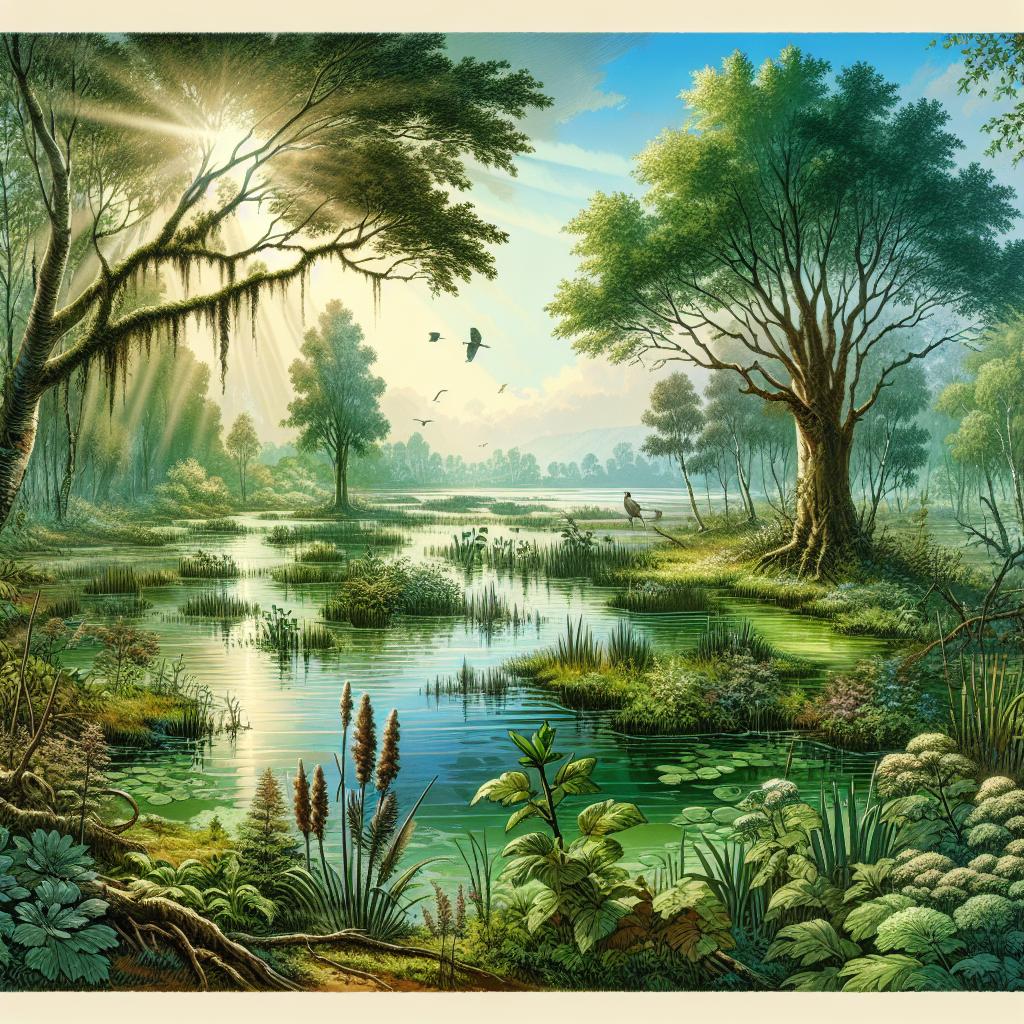
Building a Resilient Wetland: Hardy Shrubs and Trees for Moist Environments
1. Red-twig Dogwood

The vibrant red branches of the Red-twig Dogwood not only add a pop of color to your wetland but also provide a valuable food source for birds in the winter. This dense, multi-stemmed shrub is able to withstand wet soil conditions and can tolerate some shade as well. Its delicate white flowers in spring and attractive red berries in fall make it an excellent choice for both visual appeal and wildlife habitat.
2. Swamp White Oak

The Swamp White Oak is a grand addition to any wetland landscape. This majestic tree has a broad, rounded canopy that provides shade and shelter for various wetland creatures. Its deeply lobed leaves turn a stunning mix of russet, orange, and gold in the fall, creating a breathtaking display. The Swamp White Oak thrives in consistently moist soil and can adapt to a variety of conditions, making it a versatile and resilient choice for wet areas.
Q&A
Q: Is it possible to have beautiful plants in wet areas?
A: Absolutely! In fact, there are numerous breathtaking plants that thrive in wet environments.
Q: Why should we consider planting in wet areas?
A: Wet areas can be a challenge for many gardeners, but they also provide a unique opportunity to create a lush and vibrant landscape. By choosing the right plants, you can transform these areas into stunning oases of natural beauty.
Q: What are the benefits of planting in wet areas?
A: Planting in wet areas has several advantages. Firstly, it helps prevent soil erosion by holding the ground firmly in place. Secondly, it can improve water quality by filtering out pollutants and excess nutrients. Lastly, wet areas often support a rich variety of wildlife, making them a perfect habitat for birds, butterflies, and other beneficial creatures.
Q: What types of plants thrive in wet areas?
A: Many different plants can flourish in wet areas. Some popular options include irises, sedges, ferns, and certain types of grasses. Native species such as cattails and water lilies are also superb choices, as they have adapted to thrive in wetland conditions.
Q: Can you recommend some colorful flowering plants that love wet soil?
A: Of course! There are several stunning flowering plants that thrive in wet environments. Some examples include marsh marigolds, cardinal flowers, turtleheads, and marsh mallows. Each of these plants offers a burst of color that can turn any wet area into a visually captivating space.
Q: Are there any trees that can tolerate wet areas?
A: Yes, there are several tree species that can handle wet soil conditions. Willows, alders, river birches, and red maples are just a few examples. These trees not only adapt well to wet areas but also provide shade and contribute to the overall aesthetic of the landscape.
Q: Can plants be used to help control water logging in my garden?
A: Absolutely! Suitable plant choices can help mitigate water logging, as their roots act like natural moisture absorbers. Plants like giant reeds, elephant ears, and rushes have excellent water-absorbing properties and can significantly reduce standing water issues in your garden.
Q: Are there any specific care requirements for plants in wet areas?
A: While plants in wet areas enjoy the ample water supply, it’s important to ensure proper drainage. Regularly checking that plants are not sitting in stagnant water will help prevent root rot. Additionally, providing sufficient sunlight, especially for flowering plants, is essential for their overall health and blooming potential.
Q: Can I create a diverse garden in wet areas?
A: Absolutely! Wet areas provide an excellent opportunity to create a diverse garden, as they offer a unique set of growing conditions. By combining different types of plants, such as grasses, ferns, wildflowers, and shrubs, you can create a stunning and diverse landscape that is visually appealing and ecologically beneficial.
Q: Any final tips for gardening in wet areas?
A: When gardening in wet areas, it’s important to choose plants that are well-suited to your specific climate and soil conditions. Additionally, creating raised beds, adding organic matter to improve drainage, and installing rain gardens can further enhance your garden’s success. Remember to embrace the natural advantages of wet areas and let your creativity flourish.
Key Takeaways
As we conclude our exploration of the best plants for wet areas, we hope we have emblazoned within your mind a lush and thriving landscape, awakened by the nurturing touch of water. Our journey has taken us through the enchanting realm of nature’s resilient companions—plants that gracefully dance amidst the watery symphony of life.
From the verdant tendrils of the Arrowhead, its silhouette reflecting off serene ponds, to the buoyant spirit of the Water Iris, captivating us with its kaleidoscope of mesmerizing hues, we have witnessed the power of adaptability and enduring beauty. These plants, forged by the alchemy of nature, thrive where water triumphs over land, filling the atmosphere with a sense of tranquility that transcends the mundane.
As we bid farewell to this captivating exploration, let us not forget the role we play in harmonizing with our environments. For wet areas, be they marshes, bogs, or the banks of meandering streams, are not mere backdrops for our lives but integral parts of the intricate web of existence. By choosing these resilient plants, we can create a sanctuary that breathes life into our surroundings and nurtures the delicate equilibrium of our ecosystems.
By embracing the vitality of wet areas, we find ourselves woven into the tapestry of nature, every droplet that caresses the leaves, every ripple that kisses the earth, reminding us of our connection to the elemental forces that shape our universe. And as we embrace this understanding, we become co-creators, weaving our own stories within the green embrace of our landscapes.
Let this knowledge guide us in the discovery of our own personal oasis, a haven where the gifts of water and life intertwine. Take a journey through these wetlands, let the enchantment of the wet areas fill your senses, and embark upon a transformation that unites the ethereal with the earthly, the divine with the tangible.
In this symphony of life, may we find inspiration to embrace our wet areas, not as obstacles, but as gateways that lead us to a world teeming with unimaginable beauty and boundless possibilities. Let us be stewards of these precious landscapes, preserving them for generations to come, so that the legacy of these resilient plants shall forever be a testament to the remarkable spirit of nature’s enduring grace.
Embark on your own journey, let the waters guide you, and nurture a sanctuary unlike any other. In the embrace of wet areas, let us bloom alongside the plants that courageously embrace the abundance of water, reminding us that life, even in the murkiest of places, can be a vibrant masterpiece.
